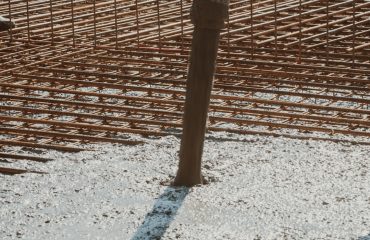In a world increasingly conscious of safety and structural integrity, fire-resistant steel stands as a critical component in protecting lives and property. This remarkable material, engineered to withstand extreme temperatures, plays a vital role in various high-risk environments, from skyscrapers and bridges to industrial plants and offshore platforms. This comprehensive guide delves into the fascinating world of fire-resistant steel, exploring its properties, applications, and future potential.
Understanding the Properties of Fire-Resistant Steel
Fire-resistant steel isn’t simply a single material; it encompasses a range of alloys specifically designed to maintain their structural integrity at elevated temperatures. Unlike ordinary steel, which loses strength rapidly above 500°C (932°F), fire-resistant steel retains its load-bearing capacity even when exposed to intense heat. This resilience is achieved through careful alloying, typically incorporating elements like chromium, nickel, molybdenum, and sometimes silicon and manganese. These additions enhance the steel’s high-temperature strength, oxidation resistance, and creep resistance (the tendency to deform under sustained stress at high temperatures). The exact composition varies depending on the desired performance characteristics and the specific application.
Types and Grades of Fire-Resistant Steel
The market offers a diverse range of fire-resistant steel grades, each tailored to specific needs. Common classifications include:
- Austenitic Stainless Steels: These steels, containing high levels of chromium and nickel, exhibit excellent corrosion resistance and high-temperature strength. They are frequently used in applications requiring both fire resistance and corrosion protection.
- Ferritic Stainless Steels: These steels contain high chromium content and offer a good balance of strength, oxidation resistance, and cost-effectiveness. They are often selected for structural applications where fire resistance is a primary concern.
- Martensitic Stainless Steels: These steels are known for their high strength and hardness, but they may have slightly lower oxidation resistance compared to austenitic and ferritic grades. They are often used in components requiring high strength at elevated temperatures.
- Heat-Resistant Low-Alloy Steels: These steels are designed for high-temperature applications and offer a balance between strength, oxidation resistance, and cost-effectiveness. They are often used in boilers, furnaces, and other industrial equipment.
The specific grade selected will depend on factors such as the anticipated temperature exposure, the required load-bearing capacity, and the overall cost considerations.
Applications of Fire-Resistant Steel in Modern Construction
Fire-resistant steel’s exceptional properties make it indispensable in modern construction. Its applications are widespread, including:
- Structural members in high-rise buildings: Columns, beams, and bracing systems made from fire-resistant steel ensure building stability during a fire, allowing for safe evacuation.
- Fire-rated doors and walls: These crucial safety features rely heavily on fire-resistant steel to contain flames and smoke, protecting occupants and preventing the spread of fire.
- Fire protection systems: Sprinkler systems and other fire suppression components often utilize fire-resistant steel to withstand the heat and pressure generated during operation.
- Bridges and tunnels: In these critical infrastructure projects, fire-resistant steel ensures continued structural integrity, even in the event of a significant fire.
- Offshore platforms and marine structures: The harsh marine environment combined with the risk of fire necessitates the use of highly durable and fire-resistant steel.
The versatility and reliability of fire-resistant steel contribute significantly to enhanced safety and resilience in various construction projects.
Testing and Certification of Fire-Resistant Steel
Rigorous testing is crucial to ensure the performance and reliability of fire-resistant steel. Standardized tests, often specified in building codes and industry standards, evaluate the material’s ability to withstand elevated temperatures. These tests typically involve subjecting samples to controlled fire conditions and monitoring their mechanical properties, such as strength and deflection. Common test methods include furnace tests and fire resistance tests, which assess the time it takes for the steel to lose its load-bearing capacity at specific temperature thresholds. Certification bodies, such as those accredited by international organizations, play a vital role in validating the performance of fire-resistant steel products, ensuring compliance with relevant standards and building codes.
Future Advancements in Fire-Resistant Steel Technology
Research and development continue to push the boundaries of fire-resistant steel technology. Current efforts focus on:
- Developing advanced alloys: Researchers are exploring new alloy compositions to further enhance high-temperature strength, oxidation resistance, and creep resistance.
- Improving manufacturing processes: Advanced manufacturing techniques, such as additive manufacturing (3D printing), offer the potential for creating complex shapes and optimizing material properties.
- Developing lighter and stronger steels: Reducing the weight of fire-resistant steel while maintaining its strength is a key goal, especially in applications where weight is a critical factor.
- Integrating smart sensors: Embedding sensors into fire-resistant steel structures could provide real-time monitoring of temperature and structural integrity during a fire, facilitating more effective fire response.
- Sustainable and eco-friendly solutions: The industry is exploring ways to reduce the environmental impact of fire-resistant steel production and disposal.
These advancements will lead to safer, more efficient, and more sustainable structures in the future.
In conclusion, fire-resistant steel is a critical material in ensuring safety and structural integrity in a wide array of applications. Its exceptional properties, combined with ongoing research and development, will continue to play a pivotal role in protecting lives and property from the devastating effects of fire.




